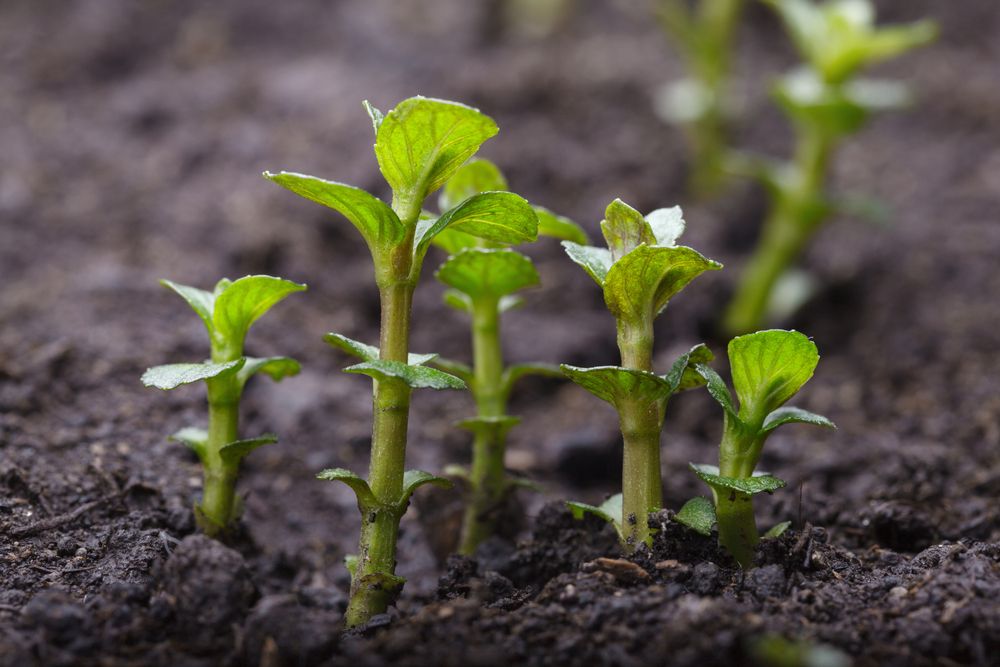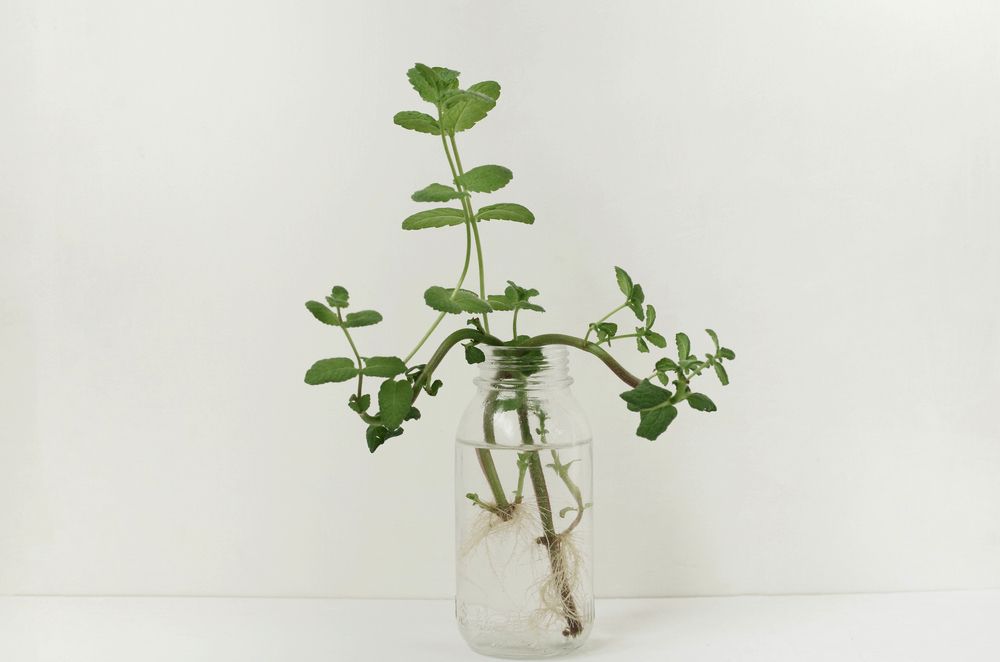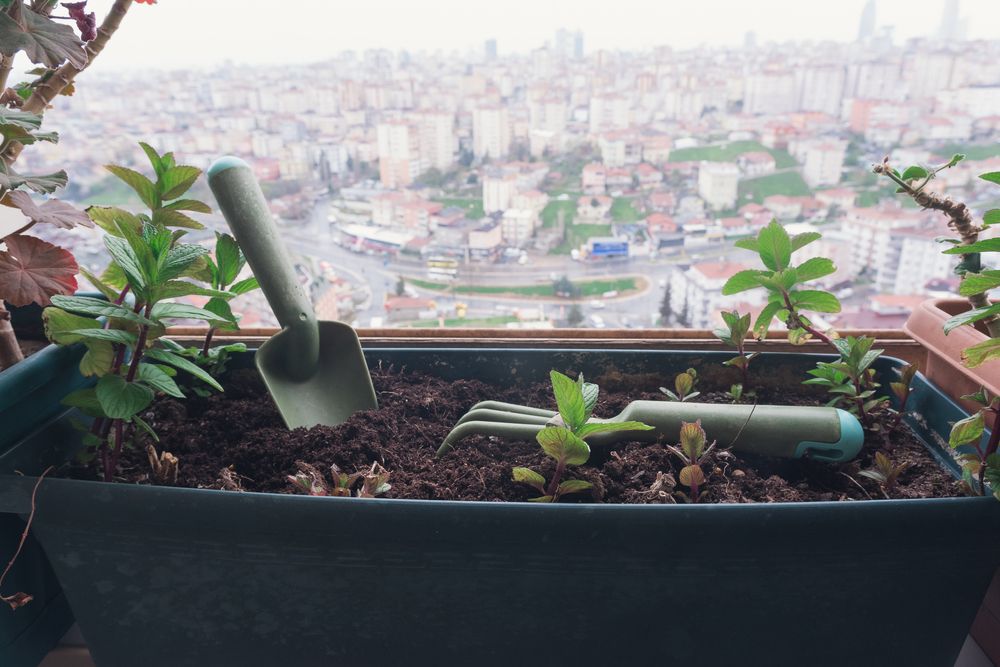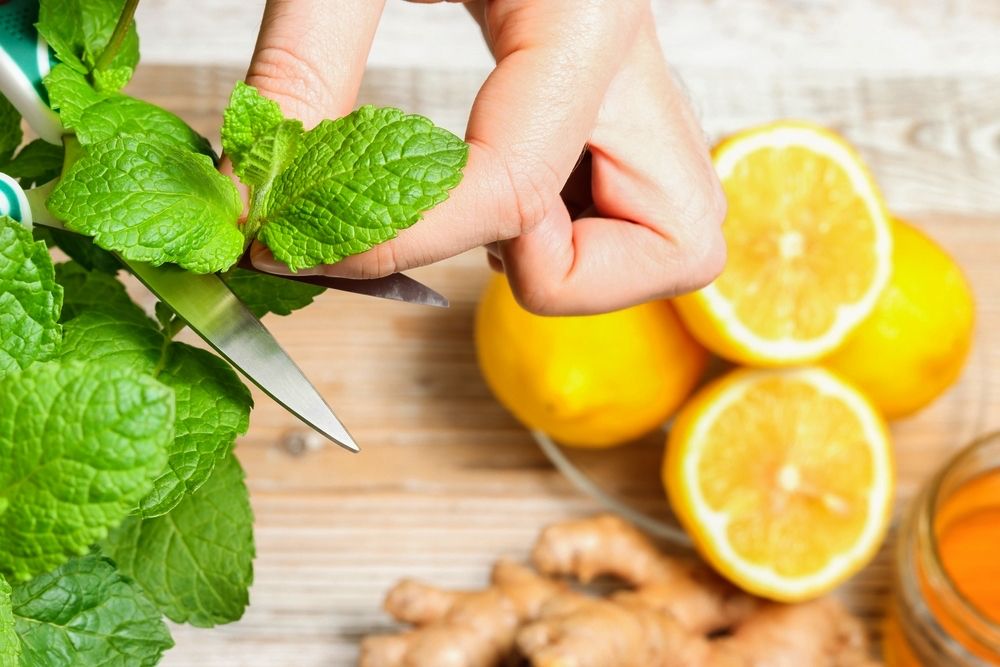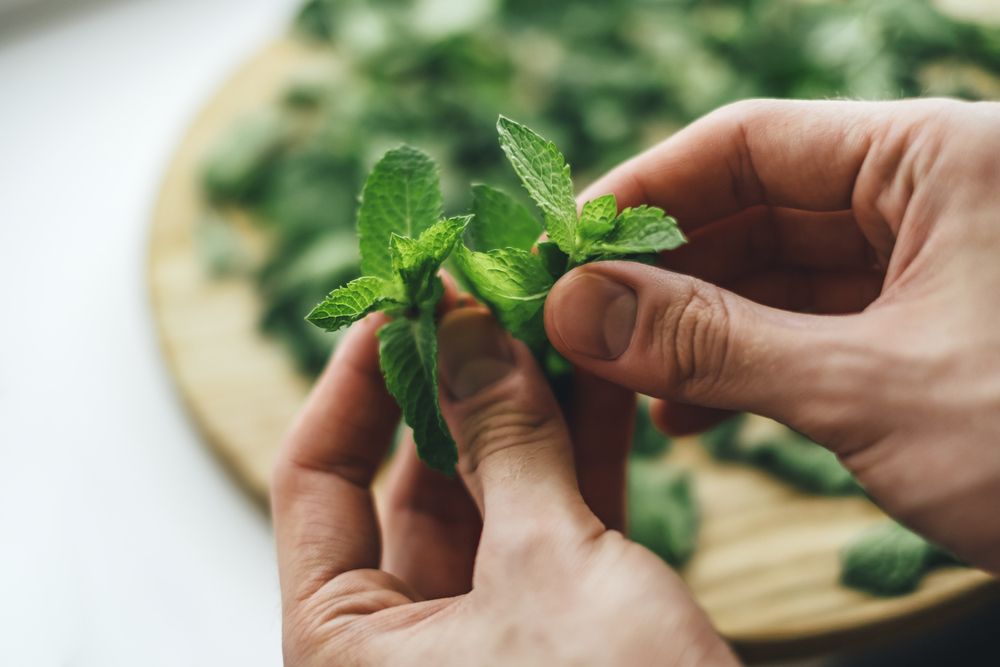
Not only is mint one of the most versatile herbs in the world, but it’s also one of the easiest to grow indoors. It’s vigorous and highly adaptable, with an attractive appearance and appealing scent that make it ideal as an edible houseplant.
If you want to know how to grow mint indoors, read on – we’re about to share the secrets behind ensuring that your indoor mint plant looks lush and leafy year-round.
How to Grow Mint Indoors: Basic Requirements
Mint is a perennial plant that, when given the right indoor conditions, will happily produce new leaves throughout the year:
Sunlight
When grown outdoors, some varieties of mint can tolerate heavily shaded spots. However, if you’re growing your plant indoors, aim to give it at least 3-4 hours of direct sunlight a day, although more would be better.
Temperature
The ideal temperature for growing a mint plant is 13-21ºC. That said, mint will generally adapt to cooler or warmer conditions, although this could have a slight impact on growth.
Space
How much space your indoor mint plant will need will depend on how large you want it to grow. Some varieties of mint have the potential to grow to over 1 metre in height, but, with regular pruning, the plant can easily be kept smaller too.
How to Grow Mint Indoors from Seed
Most people choose to grow mint from cuttings since this is a much faster way to achieve an established plant. However, growing the herb from seed gives you so many more options when it comes to varieties. Since you’ll be growing it indoors, you won’t be restricted when it comes to sowing times either – you can start your mint seeds at any point during the year.
Once you have your seeds, here’s what you’ll need to do to sow them:
- Fill a container with potting soil or multi-purpose compost – mint isn’t too fussy about the soil that it grows in. Water the soil so that it’s evenly moist
- If you would like to speed up the germination process, soak your seeds in warm water for a few hours before sowing. This is only necessary if you’re hoping to see seedlings as soon as possible – mint seeds will germinate just fine without being pre-soaked
- Make shallow furrows in your soil, about 0.5-1cm deep
- Sprinkle your seeds into those furrows as evenly as you can. Mint seeds are tiny so don’t worry if you end up sowing them too thickly – you can always thin out the seedlings later on
Keep the soil consistently moist and your seeds should germinate in about two weeks. Once your seedlings have two sets of true leaves, they’re ready to be potted up.
How to Grow Mint Indoors from Cuttings
Whether you already have an established mint plant in your garden or you’ve purchased some cut mint from the supermarket that you’d like to try growing, mint is one of the easiest herbs to grow from cuttings.
To do this, you’ll need stems that are about 10-15cm in length. Remove the leaves from the bottom third of the stem and then place the stem into some water – a small jar or glass usually works well. Sit your glass of mint on a sunny windowsill and replace the water every few days.
After about 3-4 weeks, you’ll notice roots starting to emerge from the submerged part of the stem. Once these roots have matured (ie. grown longer and thicker), your cutting will be ready for planting.
Alternatively, if you’re simply after a few fresh leaves every once in a while and don’t want a full-blown mint plant, you could also keep your mint cuttings in water. Keep swapping out the water a couple of times a week and your mint plant will happily continue to grow for several months. It won’t last forever in water, but you could always snip off more cuttings once you notice the leaves on your plant starting to yellow, so that you can then start the rooting process again.
How to Plant Mint Indoors
Although mint will grow in very small pots, a minimum size of about 25-30cm in depth, and the same in diameter, will ensure a lush and healthy plant. Try to avoid shallow containers, as mint thrives when its roots are allowed to spread.
Fill your pot with compost and then give it some water. Then, plant your mint. Whether you’re using seedlings or cuttings, you’ll likely be able to fit more than one into your pot, but try to give each plant about 15cm of space. Your pot may look a little bare to start with, but your plants will quickly fill any empty spaces.
Once planted, give your mint some more water and then add in more soil if needed.
How to Care for an Indoor Mint Plant
Although it may be one of the easiest herbs to grow indoors, you’ll still need to give your mint plant some care and attention if you want it to really thrive:
Watering an Indoor Mint Plant
Mint does best when its soil is kept relatively moist, but not overly saturated. How often you’ll need to water your indoor mint plant will depend on the conditions it’s being kept in – a plant that’s situated near a radiator will dry out much faster than one sitting beside an open window.
Until you’re able to develop a watering schedule for your specific plant, aim to check on your plant twice a week to see if it needs a drink. If the top 2-3cm of soil in your pot feels dry to the touch, then your plant is probably thirsty.
Feeding an Indoor Mint Plant
While indoor mint plants benefit from a light feed every once in a while, you need to be very careful not to overdo it. Just like with other herbs, over-fertilising a mint plant will stimulate it into producing lots of new leaves, but at the expense of flavour.
If your mint plant is purely for ornamental purposes, then this may not matter quite as much to you. However, if you’re planning on picking and using those minty leaves, then limit the amount of feed that you provide. Use a balanced, 10-10-10 fertiliser mixed up to half-strength, and don’t fertilise your plant more than once a month.
Pruning an Indoor Mint Plant
In order to encourage an indoor mint plant to branch outwards, rather than just growing upwards, it will need to be picked/pruned regularly.
The best way to do this is by giving your plant a trim once its stems are about 20cm tall. Simply cut all of the stems down to half their size, using clean shears to prevent the spread of disease. This may seem a little drastic, but pruning in this way will encourage a bushier and healthier plant.
If you notice your mint plant producing flower buds, remove these straight away. Although those flowers may look attractive, flowering affects the flavour of the leaves. If you’re keeping your mint plant purely for ornamental purposes, then this may not matter to you. However, if you’re trying to grow mint leaves that are packed with flavour, then flowering should be avoided.
Preventing Legginess
Mint plants that are grown indoors can sometimes end up quite leggy, meaning tall and spindly rather than full and bushy.
While regularly pruning your plant can help to prevent this, it’s also important to ensure that all parts of your mint plant are receiving an equal amount of sunlight. This is the most common cause of legginess in mint houseplants – one side of the plant is facing a window while the other is more shaded, meaning that the shaded side then grows taller stems and tries to lean over to the light.
Simply turning your plant every few days will help to keep new growth balanced. This way, all parts of your plant are able to soak up some direct light.
How to Harvest a Mint Houseplant
Although there’s nothing wrong with plucking off a leaf or two whenever you need one, the best way to harvest mint is by cutting the plant at its stem. Ideally, wait until the plant is about two months old before doing so, as this is when it starts to reach maturity.
To harvest your mint, use a clean pair of scissors to snip off a section of the stem just above a set of leaves. New stems will later emerge from the point where you’ve cut the stem.
How to Store Mint
While mint leaves taste best when used fresh, many people often end up with an abundance of harvested leaves from this fast-growing plant. Here are a few of the easiest ways to store them:
- Sit your stems in a jar of water and place the jar on a windowsill
- Wrap the leaves in a damp paper towel and then place this into a plastic bag. Don’t fully seal the bag. Put the bag into your fridge and the leaves should be good to use for a few more days
- Pack the leaves into ice cube trays and then pour water over the top. Freeze and defrost as needed
- Flash-freeze the leaves in a single layer before placing them all into a bag or container. Keep this in your freezer and the leaves will last for about 6 months
- Air dry or dehydrate the leaves before crumbling them into a powder. When dried properly and stored in an airtight container, mint will retain its refreshing scent and flavour for several years
How to Prepare & Cook Mint
Mint is an extremely versatile herb that lends itself well to many preparation and cooking techniques from all over the world. Here are a few ideas:
- Mint tea, served warm in the winter and iced in the summer
- A classic mint sauce
- Mixed into dips, such as tzatziki
- Added into grain-based salads, such as tabbouleh
- Mint pesto
- Added into sweet baked goods
- Added into savoury stews and soups
Common Indoor Mint Problems
Mint is a very resilient plant, especially when grown indoors. However, a few pests and diseases to keep an eye out for are:
- Fungal blight – leaves take on a spotty appearance before dying off once they’ve contracted this disease. Unfortunately, there isn’t a treatment for fungal blight, so your plant, as well as the soil that it’s in, needs to be destroyed
- Mint aphids – this pest feeds on mint leaves, leaving behind a honeydew that attracts fungal diseases. If you notice an aphid infestation, an application of neem oil should soon clear things up
- Scales – this is another pest that leaves behind a sticky honeydew as it sucks moisture from the stems of a plant. Insecticidal soaps don’t work on scales, so horticultural oils are your best bet
Popular Mint Varieties to Grow Indoors
There are more than 3500 varieties of mint out there, and pretty much all of them can be grown indoors. Some of the most popular among home gardeners are:
- Spearmint – one of the most common culinary mints because of its mild but distinct scent and flavour
- Apple mint – rounded, light green leaves that have a fruity, apple-like aftertaste
- Chocolate mint – darker coloured foliage with a chocolate scent
- Horsemint – a medicinal mint variety that grows tall and upright
- Corsican mint – has a trailing growth habit with small, round, and highly scented leaves
- Ginger mint – popular in savoury dishes because of its gingery fragrance
Conclusion
Whether you’re a fan of cooking with mint or you simply enjoy its zingy fragrance, mint is a fantastic herb to grow indoors year-round. Take good care of your plant, which is easy since it’s not demanding, and not only will it reward you with an attractive appearance, but you’ll also have quick access to fresh mint leaves whenever you need them.

